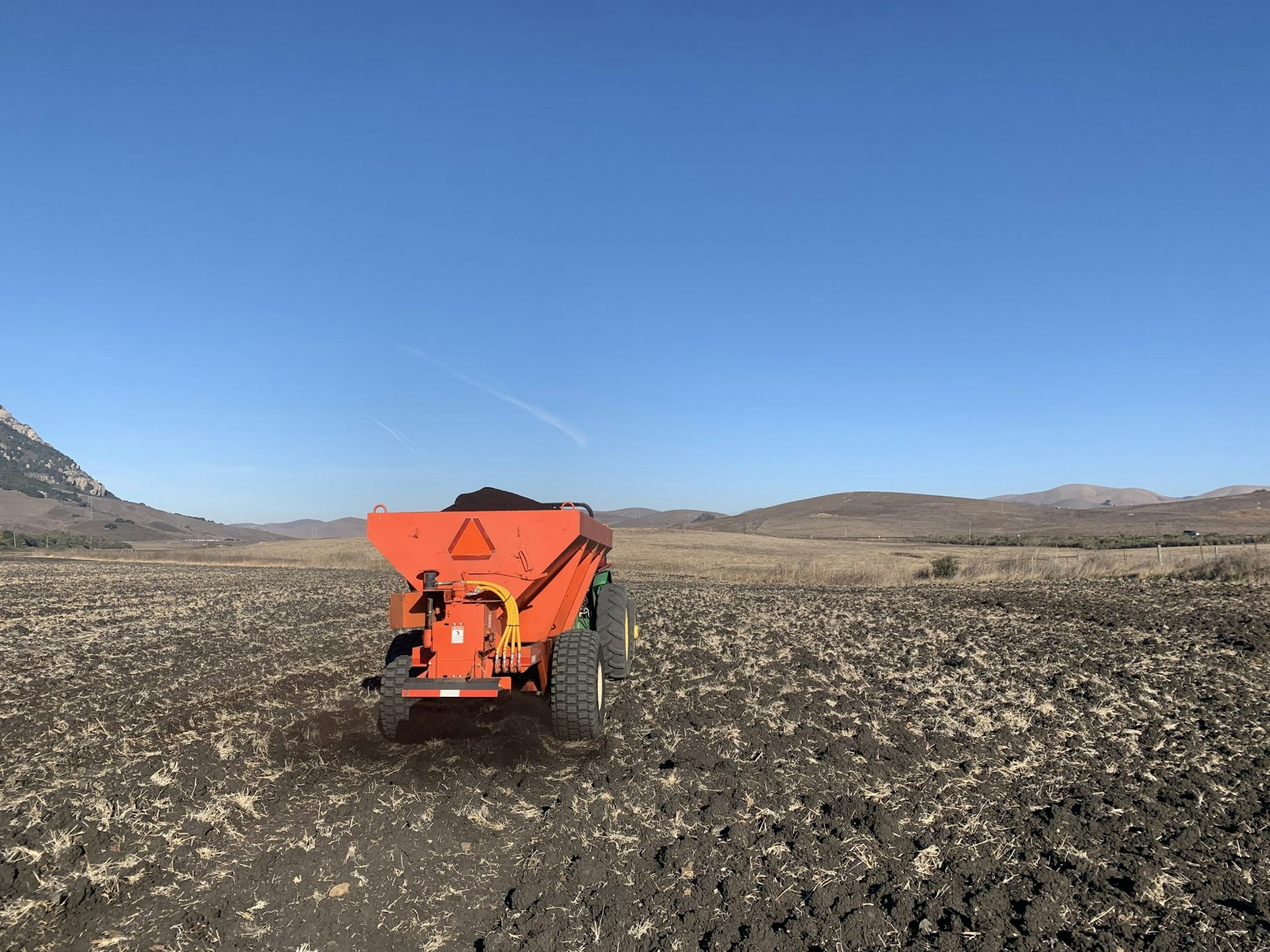CDFA Healthy Soils Program Demonstration Project

The HSP has two components: the HSP Incentives Program and the HSP Demonstration Projects. The HSP Incentives Program provides financial assistance for implementation of conservation management that improve soil health, sequester carbon and reduce greenhouse gas (GHG) emissions. The HSP Demonstration Projects showcase California farmers and rancher’s implementation of HSP practices. The Coastal Resource Conservation District (CSLRCD) supports both the Incentive Program by providing technical assistance to our agriculturalists and demonstration projects.
DEMONSTRATION – CHORRO CREEK RANCH
In 2020, Coastal San Luis Resource Conservation District (CSLRCD) and Cal Poly State University started a trial project that takes a deep dive into the effects of reduced tillage and compost application on hay production. Soil conservation practices are known to be important for long-term soil health and sustainability of farmland.
Compost application can improve bulk density, reduce soil hardness and build soil structure, which increases root establishment. Compost can also increase nutrient availability and improve plant-microbe relationships in the rhizosphere. Both compost application and reduced tillage can increase soil organic matter and increase aggregate formation. Moreover, reduced tillage can decrease the number of passes through the field, which reduces greenhouse gas emissions, heavy equipment compacting the soil, labor cost and time to prepare the field for the next planting.
The impact of compost application and reduced tillage intensity on soil and crop health, however, has not been assessed in dryland forage production in the Central Coast region. In a project funded through the California Department of Food and Agriculture Healthy Soils Program, we aim to assess the impact of compost application along with reduced tillage practices on soil health, yield and forage quality at Cal Poly's Chorro Creek Ranch.
This project has two experimental factors (compost or no compost and conventional tillage or reduced tillage) and looks at their individual and combined effects on soil and plant health as well as agronomic factors such as biomass. The field trial is set up with four treatments: conventional tillage without compost, conventional tillage with compost, reduced tillage without compost, and reduced tillage with compost.
Each treatment is replicated three times. Cal Poly compost, primarily derived from animal waste, was applied at a rate of five tons/acre. The field trial sits on cropley clay soil. The forage crop grown was a mix of beardless barley, oats and patron beardless wheat. Soil samples are taken every fall for analysis of bulk density, soil organic carbon, plant available nutrients, soil aggregation and mineralizable C. Soil hardness, soil moisture and infiltration rates are assessed once a month.
Preliminary findings:
● Impacts of reduced tillage and compost application on soil properties were minimal in the short term,
● There is a common misconception that frequent tillage will improve physical soil properties, despite scientific evidence of long-term beneficial impacts of reduced tillage methods. Our results demonstrate that the impact of tillage on infiltration is short lived.
● There was no impact of compost application on feed quality. Possibly, high soil organic matter at this field site masks any potential benefits of additional nutrients applied by the compost.
● Reduced tillage allowed to reduce the number of tractor passes, without affecting yield.

Partners: Cal Poly State University
Funders: California Climate Conservancy
RCD Contact: Hayley Barnes, hbarnes@coastalrcd.org
